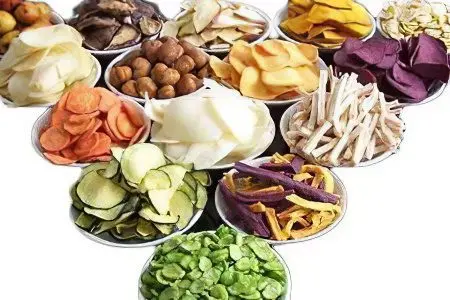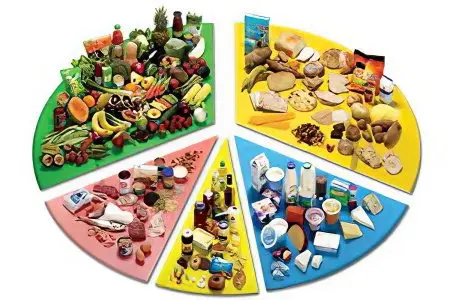Contents

Hepatitis C is an infectious disease that causes severe damage to the liver and is caused by the ingestion of a special virus. Often it becomes chronic and requires long-term treatment. This is due to the fact that the restoration of the main functions of the liver, to the violation of which hepatitis C leads, occurs very slowly. Proper nutrition is important in this regard.
Doctors recommend following a special diet. Its main goal is to relieve the burden on the liver, but at the same time, vitamins and essential nutrients should be supplied to the body with food:
Avoid fried and heavy foods. You need to eat more often, but the portions should be small. The diet can include vegetable soups, buckwheat and oatmeal. Meat is the main source of protein, which must be present on the menu, but for patients with hepatitis C, only low-fat varieties are suitable. You can bake it, cook cutlets or steamed meatballs. Meat dishes should be alternated with fish. However, fish should also be lean varieties.
Dairy products are rich in calcium and protein. Of these, preference should be given to cheese, non-acidic cottage cheese, kefir. It is necessary to choose dairy products of low fat content. Mayonnaise, spicy sauces are replaced with sour cream. It is recommended to eat more vegetables, but they should be wiped, but from fresh berries and fruits, prepare juices, fruit drinks and compotes. Smoked meats and pickles should be excluded from the diet. In addition, you will have to give up spinach, legumes and sorrel. Sweets, coffee, ice cream, pastries – all these products are also prohibited. In chronic hepatitis C, dishes should be wiped and chopped.
The diet should be balanced, and a third of the daily fat intake should be of plant origin. You shouldn’t give them up completely. After all, it is fats that allow you to normalize the metabolism of fat-soluble vitamins. There should also be enough animal protein. It is necessary for the synthesis of blood and tissue protein, which is carried out in the liver. The source of animal protein is lean meat and fish. Varieties such as lamb, goose, pork and all dishes prepared from them will not benefit patients with hepatitis C.
Pickled mushrooms and vegetables, chocolate and sweet pastries negatively affect the liver. To prevent excess fluid from accumulating in the body, salt intake should be limited. You can cook an omelette, while the yolks need to be removed from the eggs. Sweet lovers are recommended to eat jam, jam or honey. However, these products should not be abused. It is better to eat fruits or jelly made from them for dessert.
If the patient’s condition does not improve, the daily fat intake should be reduced and honey, milk and jam should be abandoned. Carbohydrates are recommended to choose complex. These include whole grains, oatmeal, durum wheat pasta. Such products provide the body with energy for a long time, and they are healthier than simple carbohydrates, which are found in sweets, pastries, chocolate and sweets.
Recipes of dishes useful for hepatitis C
Buckwheat casserole with chicken
For this simple but tasty and nutritious dish, it is better to use chicken breast. It should be boiled and cleaned from the skin. Finely chopped carrots, cauliflower and onions stew in a small amount of butter. Grind the breast in a blender and put in a mold. Put stewed vegetables on top of the meat, which should first be mixed with egg white, and bake in the oven.
Vegetable puree soup
Cauliflower and potatoes should be boiled, chopped in a blender, and then stewed in vegetable broth. Cook rice separately. It must be rubbed and added to vegetable puree along with a small amount of butter and warm milk. After that, the dish can be served at the table.
Steamed cabbage cutlets
Stew chopped cabbage in milk with a tablespoon of butter. When it is ready, add semolina and cook a little more. Grind the resulting mixture in a blender, cool and add egg whites to it. From this minced vegetable you need to form cutlets and steam them. You can serve them to the table, seasoning with low-fat sour cream.
Pumpkin dessert with prunes
Due to the presence of dried fruits in the composition of this dish, it will be especially useful for patients suffering from constipation. The pumpkin must be finely chopped and stewed in milk. When it is almost ready, add semolina to it.
Boil pitted prunes and then chop. Add dried fruits to the resulting mixture of pumpkin and semolina, pour egg whites into the same place. You can put a little honey to make the dessert sweeter. Bake the resulting mixture in the oven, laying it out in a non-stick pan and spreading low-fat sour cream on top.
squash pudding
Another option for a tasty and healthy dessert for patients with hepatitis C. Peeled and seeded apples and zucchini should be stewed in milk until they become soft, and then add semolina to them. Cool the resulting mixture and mix with eggs. The dish should be steamed. For sweetness, you can put a little sugar in the mixture, but it is better to add natural jam or honey to the pudding when serving.
Menu for a week with hepatitis C

Monday
Breakfast: cottage cheese casserole, tea without sugar
Second breakfast: apple
Lunch: vegetable borsch with sour cream, low-fat fish with steamed vegetables, freshly squeezed juice
Afternoon snack: unsweetened yogurt
Dinner: toasted white bread with cheese, vegetable salad, tea without sugar
Tuesday
Breakfast: cottage cheese with nuts and honey, berry kissel
Second breakfast: cabbage casserole
Lunch: vegetable soup, chicken breast with buckwheat, tea without sugar
Afternoon snack: unsweetened cookies with kefir
Dinner: durum wheat pasta, berry juice
Wednesday
Breakfast: steamed protein omelet with vegetables and herbs, tea with milk
Second breakfast: cottage cheese with baked apples
Lunch: cabbage cutlets, mashed potatoes, tomato soup, fruit jelly
Snack: yoghurt with natural fruits
Dinner: buckwheat chicken casserole, a glass of whole milk
Thursday
Breakfast: squash pudding, carrot juice
Second breakfast: oatmeal with dried fruits, tea
Lunch: steamed minced chicken cutlets, stewed vegetables, puree soup, freshly squeezed juice
Afternoon snack: cottage cheese casserole, kefir
Dinner: homemade noodles, chicken breast, a glass of whole milk
Friday
Breakfast: pumpkin dessert with prunes, tea without sugar
Second breakfast: rice porridge with milk
Lunch: vegetable borscht, cabbage cutlets and boiled rice, still mineral water
Afternoon snack: apple
Dinner: fish cakes, vegetable salad, kefir
Saturday
Breakfast: applesauce, dried fruits, carrot juice
Second breakfast: cottage cheese casserole with dried apricots
Lunch: steamed meat cutlets, buckwheat, vegetable puree soup, tea without sugar
Afternoon snack: kefir with unsweetened biscuits
Dinner: steamed cheesecakes with sour cream, fruit jelly
Sunday
Breakfast: oatmeal with dried fruits, tea without sugar
Second breakfast: protein omelette
Lunch: lean fish, mashed potatoes, vegetarian borscht, fruit juice
Afternoon snack: cottage cheese casserole with apples
Dinner: milk soup with noodles, kefir









